Vibration Control Design for a Plate Structure with Electrorheological ATVA Using Interval Type-2 Fuzzy System
Abstract
:1. Introduction
2. Sandwich-Type ATVA with ER Materials Embedded
2.1. Design of the Sandwich ATVA with ER Materials Embedded
2.2. Expermental Setup to Measure the Dynamic Response of the ERF Embedded Sandwich Beam
- (1)
- The left side of the sandwich beam is clamped on top of an electromagnetic vibration shaker (LDS V406) which provides the exciting force to the ERF embedded beam.
- (2)
- A laser displacement sensor (Keyence LC2440; Keyence Corporation, Osaka, Japan) and a non-contacting eddy-current displacement probe (Keyence AH-416; Keyence Corporation, Osaka, Japan) are used to measure the displacements of the input excitation (the clamped side on the shaker) and the free end of the ERF embedded beam.
- (3)
- A high-voltage power amplifier is used to provide the electric field to the ER fluid via the two electrodes of the aluminum plates, which is located on the left side of the ERF embedded beam.
- (4)
- When the different electric fields are applied to the ERF, a dynamic signal analyzer (HP 35665A, Agilent, Santa Clara, CA, USA) is used to analyze the dynamic characteristics of the ERF sandwich beam. The vibration signal is provided to the shaker at the frequency from 0 to 200 Hz to actuate the ERF embedded beam.
- (5)
- The time response signals are captured by the dynamic signal analyzer (HP 35665A). Then, the frequency response is obtained by using fast Fourier transform (FFT) in HP 35665A. The same experimental steps were repeated for the electric field varying from 0 to 2 () in 0.25 () increments.
- (6)
- Figure 2 is the scheme view and diagram to measure the transmissibility of the ERF embedded TVA with the corresponding electric field. Figure 3 shows the transmissibility of the TVA as the different electric field is applied to the ERF. For each electric field applied to the ERF, the damping ratios of ERF can be obtained using the half-power point bandwidth method as follows according to the 1st mode frequency.where the and are the frequencies with the amplitude of (as shown in Figure 4) and is the 1st mode frequency. Table 2 describes damping ratios of the ERF for each electric field obtained by the half-power point bandwidth method.
- (7)
- According to the 1st mode frequency of the ERF embedded sandwich beam in Figure 3, the equivalent shear modulus of the ERF can be obtained by using the goal driven optimization method in ANSYS Workbench. In the simulation, the goal is to find the optimal shear modulus of ERF to make the simulated 1st mode frequency of the ERFATVA be consistent with the actual value obtained by the experiments. Therefore, the damping ratio and shear modulus of the ERF are used in the ANSYS model.
3. Design and Analysis of the ERF Embedded ATVA for a Plate Structure
3.1. Governing Equations of the ERF Embedded Beam
3.2. Simulation Study to Obtain a Suitable Width of the ERF Embedded ATVA for a Plate Using ANSYS
3.3. Experimental Validations
4. Semi-Active Vibration Control of the Thin Plate Using the ERF Embedded ATVA
4.1. Experimental Setup for the Thin Plate with Varying Harmonic Vibrations
4.2. Semi-Active Vibration Control Using the Interval Type-2 Fuzzy
Type-2 Fuzzy Controller Design for ATVA
4.3. Semi-Active Vibration Controller with a Switching-Mode Rule for ATVA
5. Experimental Results and Discussion
5.1. Case I: External Vibration at the Specified Frequency
5.2. Case II: External Vibration with the Varying Frequency
6. Conclusions
Acknowledgments
Author Contributions
Conflicts of Interest
References
- Carlson, J.D.; Catanzarite, D.M.; St. Clair, K.A. Commercial magneto-rheological fluid device. In Proceedings of the 5th International Conference ER Fluids, MR Fluids and Associated Technology, Sheffield, UK, 10–14 July 1995; pp. 20–28. [Google Scholar]
- Giurgiutiu, V. Review of Smart-Materials Actuation Solutions for Aeroelastic and Vibration Control. J. Intell. Mater. Syst. Struct. 2000, 11, 525–544. [Google Scholar] [CrossRef]
- Valliappan, S.; Qi, K. Review of seismic vibration control using ‘smart materials’. Struct. Eng. Mech. 2001, 11, 617–636. [Google Scholar] [CrossRef]
- Vautier, B.J.G.; Moheimani, S.O.R. Vibration reduction of resonant structures using charge controlled piezoelectric actuators. Electron. Lett. 2003, 39, 1036–1038. [Google Scholar] [CrossRef]
- Moheimani, S.O.R.; Vautier, B.J.G. Resonant control of structural vibration using charge-driven piezoelectric actuators. IEEE Trans. Control Syst. Tech. 2005, 13, 1021–1035. [Google Scholar] [CrossRef]
- Rodriguez-Fortun, J.M.; Orus, J.; Alfonso, J.; Gimeno, F.B.; Jose, A.; Castellanos, J.A. Flatness-Based Active Vibration Control for Piezoelectric Actuators. IEEE/ASME Trans. Mech. 2013, 18, 221–229. [Google Scholar] [CrossRef]
- Steiger, K.; Mokrý, P. Finite element analysis of the macro fiber composite actuator: Macroscopic elastic and piezoelectric properties and active control thereof by means of negative capacitance shunt circuit. Smart Mater. Struct. 2015, 24, 025026. [Google Scholar] [CrossRef]
- Zhang, S.; Yan, B.; Luo, Y.; Miao, W.; Xu, M. An Enhanced Piezoelectric Vibration Energy Harvesting System with Macro Fiber Composite. Shock Vib. 2015, 2015, 916870. [Google Scholar] [CrossRef]
- Beek, T.V.; Pluk, K.; Jansen, H.; Lomonova, E. Optimisation and measurement of eddy current damping in a passive tuned mass damper. IET Electr. Power Appl. 2016, 10, 641–648. [Google Scholar] [CrossRef]
- Scheidler, J.J.; Asnani, V.M.; Dapino, M.J. Dynamically tuned magnetostrictive spring with electrically controlled stiffness. Smart Mater. Struct. 2016, 25, 035007. [Google Scholar] [CrossRef]
- Olabi, A.G.; Grunwald, A. Design and application of magnetorheological fluid. Mater. Des. 2007, 28, 2658–2664. [Google Scholar] [CrossRef]
- Weber, F.; Maslanka, M. Frequency and damping adaptation of a TMD with controlled MR Damper. Smart Mater. Struct. 2012, 21, 055011. [Google Scholar] [CrossRef]
- Lin, C.J.; Yau, H.T.; Lee, C.Y.; Tung, K.H. System Identification and Semiactive Control of a Squeeze-Mode Magnetorheological Damper. IEEE/ASME Trans. Mech. 2013, 18, 1691–1701. [Google Scholar] [CrossRef]
- Lee, C.Y.; Cheng, C.C. Dynamic Characteristics of Sandwich Beam with Embedded Electro-Rheological Fluid. J. Intell. Mater. Syst. Struct. 1998, 9, 60–68. [Google Scholar] [CrossRef]
- Sun, Y.; Thomas, M. Control of torsional rotor vibrations using an electrorheological fluid dynamic absorber. J. Vib. Control 2011, 17, 1253–1264. [Google Scholar] [CrossRef]
- Lin, C.J.; Lee, C.Y.; Cheng, C.H.; Chen, G.F. Vibration Control of a Cantilever Beam Using a Tunable Vibration Absorber Embedded with ER Fluids. Int. J. Aerosp. Ind. Mechatron. Manuf. Eng. 2013, 7, 1412–1418. [Google Scholar]
- Lin, C.J.; Lee, C.Y.; Liu, Y.; Cheng, C.H. Interval Type-2 Fuzzy Vibration Control of a ERF Embedded Smart Structure. Int. Sci. Index Mechan. Mechatron. Eng. 2014, 8, 1215–1221. [Google Scholar]
- Song, G.; Ma, N.; Li, H.-N. Applications of shape memory alloys in civil structures. Eng. Struct. 2006, 28, 1266–1274. [Google Scholar] [CrossRef]
- Lee, C.Y.; Chen, C.C.; Yang, T.H.; Lin, C.J. Structural vibration control using a tunable hybrid shape memory material vibration absorber. J. Intell. Mater. Syst. Struct. 2012, 23, 1725–1734. [Google Scholar] [CrossRef]
- Damanpack, A.R.; Bodaghi, M.; Aghdam, M.M.; Shakeri, M. On the vibration control capability of shape memory alloy composite beams. Compos. Struct. 2014, 110, 325–334. [Google Scholar] [CrossRef]
- Lee, C.Y.; Pai, C.A. Design and implementation of tunable multi-degree-of-freedom vibration absorber made of hybrid shape memory helical springs. J. Intell. Mater. Syst. Struct. 2016, 27, 1047–1060. [Google Scholar] [CrossRef]
- Soltani, P.; Kerschen, G.; Tondreau, G.; Deraemaeker, A. Piezoelectric vibration damping using resonant shunt circuits: An exact solution. Smart Mater. Struct. 2014, 23, 125014. [Google Scholar] [CrossRef]
- Guo, K.; Jiang, J. Independent modal resonant shunt for multimode vibration control of a truss-cored sandwich panel. Int. J. Dyn. Control 2014, 2, 326–334. [Google Scholar] [CrossRef]
- Yan, B.; Zhang, X.; Luo, Y.; Zhang, Z.; Xie, S.; Zhang, Y. Negative impedance shunted electromagnetic absorber for broadband absorbing: Experimental investigation. Smart Mater. Struct. 2014, 23, 125044. [Google Scholar] [CrossRef]
- Qureshi, E.M.; Shen, X.; Chen, J. Vibration control laws via shunted piezoelectric transducers: A review. Int. J. Aeronaut. Space Sci. 2014, 15, 1–19. [Google Scholar] [CrossRef]
- Yan, B.; Luo, Y.; Zhang, X. Structural multimode vibration absorbing with electromagnetic shunt damping. J. Vib. Control 2016, 22, 1604–1617. [Google Scholar] [CrossRef]
- Necasek, J.; Vaclavik, J.; Marton, P. Digital synthetic impedance for application in vibration damping. Rev. Sci. Instrum. 2016, 87, 024704. [Google Scholar] [CrossRef] [PubMed]
- Kelley, C.R.; Kauffman, J. Adaptive Synchronized Switch Damping on an Inductor: A Self-Tuning Switching Law. Smart Mater. Struct. 2017, 26. [Google Scholar] [CrossRef]
- McDaid, A.J.; Mace, B.R. A Robust Adaptive Tuned Vibration Absorber Using Semi-Passive Shunt Electronics. IEEE Trans. Ind. Electron. 2016, 63, 5069–5077. [Google Scholar] [CrossRef]
- Tao, J.; Jing, R.; Qiu, X. Sound absorption of a finite micro-perforated panel backed by a shunted loudspeaker. J. Acoust. Soc. Am. 2014, 135, 231–238. [Google Scholar] [CrossRef] [PubMed]
- Shen, W.; Zhu, S.; Zhu, H.; Xu, Y.-L. Electromagnetic energy harvesting from structural vibrations during earthquakes. Smart Struct. Syst. 2016, 18, 449–470. [Google Scholar] [CrossRef]
- Yan, B.; Zhang, S.; Zhang, X.; Wang, C.; Wu, C. Self-powered electromagnetic energy harvesting for the low power consumption electronics: Design and experiment. Int. J. Appl. Electromagn. Mech. 2017, 54, 1–11. [Google Scholar] [CrossRef]
- Pérez-Díaz, J.; Valiente-Blanco, I.; Cristache, C. Z-Damper: A New Paradigm for Attenuation of Vibrations. Machines 2016, 4, 12. [Google Scholar] [CrossRef]
- Vaclavik, J.; Kodejska, M.; Mokry, P. Wall-plug efficiency analysis of semi-active piezoelectric shunt damping systems. J. Vib. Control 2016, 22, 2582–2590. [Google Scholar] [CrossRef]
- Yan, B.; Wang, K.; Hu, Z.; Wu, C.; Zhang, X. Shunt Damping Vibration Control Technology: A Review. Appl. Sci. 2017, 7, 494. [Google Scholar] [CrossRef]
- Frahm, H. Device for damping vibrations of bodies. U.S. Patent No. 989958, 18 April 1911. [Google Scholar]
- Korenev, B.G.; Reznikov, L.M. Dynamic Vibration Absorbers, Theory and Technical Applications; Wiley: New York, NY, USA, 1993. [Google Scholar]
- Den Hartog, J.P. Mechanical Vibration, 4th ed.; Dover Publication: New York, NY, USA, 1985. [Google Scholar]
- Zilletti, M.; Elliott, S.J.; Rustighi, E. Optimisation of dynamic vibration absorber to minimize internal power dissipation. J. Sound Vib. 2012, 331, 4093–4100. [Google Scholar] [CrossRef]
- Kela, L.; Vahaoja, P. Recent studies of adaptive tuned vibration absorbers/neutralizers. Appl. Mech. Rev. 2009, 62, 060801. [Google Scholar] [CrossRef]
- Brennan, M.J. Some recent developments in adaptive tuned vibration absorbers/neutralizers. Shock Vib. 2006, 13, 531–543. [Google Scholar] [CrossRef]
- Ghorbani-Tanha, A.K.; Rahimian, M.; Noorzad, A. A novel semiactive variable stiffness device and its application in a new semiactive tuned vibration absorber. J. Eng. Mech. 2011, 137, 390–399. [Google Scholar] [CrossRef]
- Winslow, W.M. Induced Fibration of Suspensions. J. Appl. Phys. 1949, 20, 1137–1140. [Google Scholar] [CrossRef]
- Yin, J.B.; Zhao, X.P. Electrorheology of nanofiber suspensions. Nanoscale Res. Lett. 2011, 6, 256. [Google Scholar] [CrossRef] [PubMed]
- Conrad, H.; Sprecher, A.F. Characteristics and mechanisms of electrorheological fluids. J. Stat. Phys. 1991, 64, 1073–1091. [Google Scholar] [CrossRef]
- Weiss, K.D.; Coulter, J.P.; Carlson, J.D. Electrorheological fluid under elongation, compression and shearing. J. Intell. Mater. Syst. Struct. 1993, 4, 13. [Google Scholar] [CrossRef]
- Block, H.; Rattray, P. Recent developments in ER fluids. In Progress in Electrorheology; Havelka, K.O., Filisko, F.E., Eds.; Plenum Press: New York, NY, USA, 1995; pp. 19–42. [Google Scholar]
- Choi, S.B.; Park, Y.K.; Cheong, C.C. Active vibration control of intelligent composite laminate structures incorporating an electro-rheological fluid. J. Intell. Mater. Syst. Struct. 1996, 7, 411–419. [Google Scholar] [CrossRef]
- See, H. Advances in modeling the mechanisms and rheology of electrorheological fluids. Korea-Australia Rheol. J. 1999, 11, 169–195. [Google Scholar]
- Hao, T. Electrorheological suspensions. Adv. Colloid. Interface Sci. 2002, 97, 1–35. [Google Scholar] [CrossRef]
- See, H. Advances in electro-rheological fluids: Materials, modelling and applications. J. Ind. Eng. Chem. 2004, 10, 1132–1145. [Google Scholar]
- Sung, J.H.; Cho, M.S.; Choi, H.J.; Jhon, M.S. Electrorheology of semiconducting polymers. J. Ind. Eng. Chem. 2004, 10, 1217–1229. [Google Scholar]
- Zhao, X.P.; Yin, J.B. Advances in electrorheological fluids based on inorganic dielectric materials. J. Ind. Eng. Chem. 2006, 12, 184–198. [Google Scholar]
- Quadrat, O.; Stejskal, J. Polyaniline in electrorheology. J. Ind. Eng. Chem. 2006, 12, 352–361. [Google Scholar]
- Zhao, X.P.; Yin, J.B.; Tang, H. New advances in design and preparation of electrorheological materials and devices. In Smart Materials and Structures: New Research; Reece, P.L., Ed.; Nova Science Publishing: New York, NY, USA, 2007; pp. 1–66. [Google Scholar]
- Kim, D.H.; Kim, Y.D. Electrorheological properties of polypyrrole and its composite ER fluids. J. Ind. Eng. Chem. 2007, 13, 879–894. [Google Scholar]
- Choi, H.J.; Jhon, M.S. Electrorheology of polymers and nanocomposites. Soft Matter 2009, 5, 1562. [Google Scholar] [CrossRef]
- Yalcintas, M.; Coulter, J.P.; Don, D.L. Structural modeling and optimal control of electro-rheological material based adaptive beams. Smart Mater. Struct. 1995, 4, 207–214. [Google Scholar] [CrossRef]
- Rahn, C.D.; Joshi, S. Modeling and control of an electro-rheological sandwich beam. J. Vib. Acoust. 1998, 120, 221–227. [Google Scholar] [CrossRef]
- Wei, K.X.; Meng, G.W.; Zhang, M. Vibration characteristics of a rotating beam filled with electrorheological fluid. J. Intell. Mater. Syst. Struct. 2007, 18, 1165–1173. [Google Scholar] [CrossRef]
- Choi, S.B.; Han, Y.M.; Sung, K.G. Vibration Control of Vehicle Suspension System Featuring ER Shock Absorber. Int. J. Appl. Electrom. 2008, 27, 189–204. [Google Scholar]
- Takawa, T.; Fukuda, T.; Nakashima, K. Fuzzy control of vibration of a smart CFRP laminated beam. Smart Mater. Struct. 2000, 9, 215–219. [Google Scholar] [CrossRef]
- Choi, S.B.; Han, S.S. H-infinite control of electrorheological suspension system subjected to parameter uncertainties. Mechatronics 2003, 13, 639–657. [Google Scholar] [CrossRef]
- Zadeh, L.A. The concept of a linguistic variable and its application to approximate reasoning-I. Inf. Sci. 1975, 8, 199–249. [Google Scholar] [CrossRef]
- Mendel, J.M. Uncertain Rule-Based Fuzzy Logic Systems: Introduction and New Directions; Prentice-Hall: Upper-Saddle River, NJ, USA, 2001. [Google Scholar]
- Kovacic, Z.; Balenovic, M.; Bogdan, S. Sensitivity based self learning fuzzy logic control for a servo system. IEEE Control Syst. Mag. 1998, 18, 41–51. [Google Scholar] [CrossRef]
- Lee, H.; Tomizuka, M. Robust adaptive control using a universal approximator for SISO nonlinear systems. IEEE Trans. Fuzzy Syst. 2000, 8, 95–106. [Google Scholar]
- Wang, J.S.; Lee, C.S. Self-adaptive neuro-fuzzy inference systems for classification application. IEEE Trans. Fuzzy Syst. 2002, 10, 790–802. [Google Scholar] [CrossRef]
- Golea, N.; Golea, A.; Benmahammed, K. Fuzzy model reference adaptive control. IEEE Trans. Fuzzy Syst. 2002, 10, 436–444. [Google Scholar] [CrossRef]
- Hojati, M.; Gazor, S. Hybrid adaptive fuzzy identification and control of nonlinear systems. IEEE Trans. Fuzzy Syst. 2002, 10, 198–210. [Google Scholar] [CrossRef]
- Mendel, J.M. Fuzzy Sets for Words: A New Beginning. In Proceedings of the International Conference on Fuzzy Systems (IEEE FUZZ), St. Louis, MO, USA, 26–28 May 2003; pp. 37–42. [Google Scholar]
- Mendel, J.M. Computing derivatives in interval type-2 fuzzy logic systems. IEEE Trans. Fuzzy Syst. 2004, 12, 84–98. [Google Scholar] [CrossRef]
- Wang, C.H.; Cheng, C.S.; Lee, C.T. Dynamical optimal training for interval type-2 fuzzy neural network (T2FNN). IEEE Trans. Syst. Man Cybern. Part B 2004, 34, 1462–1477. [Google Scholar] [CrossRef]
- Mendel, J.M. Type-2 Fuzzy Sets and Systems: An Overview. IEEE Comput. Intell. Mag. 2007, 2, 20–29. [Google Scholar] [CrossRef]
- Kuo, C.T.; Lee, C.H. Network-based Type-2 Fuzzy System with Water Flow Like Algorithm for System Identification and Signal Processing. Smart Sci. 2016, 3, 21–34. [Google Scholar] [CrossRef]
- Wang, K.A.; Peng, Y.K.; Wang, F.C. The Development and Control of a Long-Stroke Precision Stage. Smart Sci. 2017, 5, 85–93. [Google Scholar] [CrossRef]
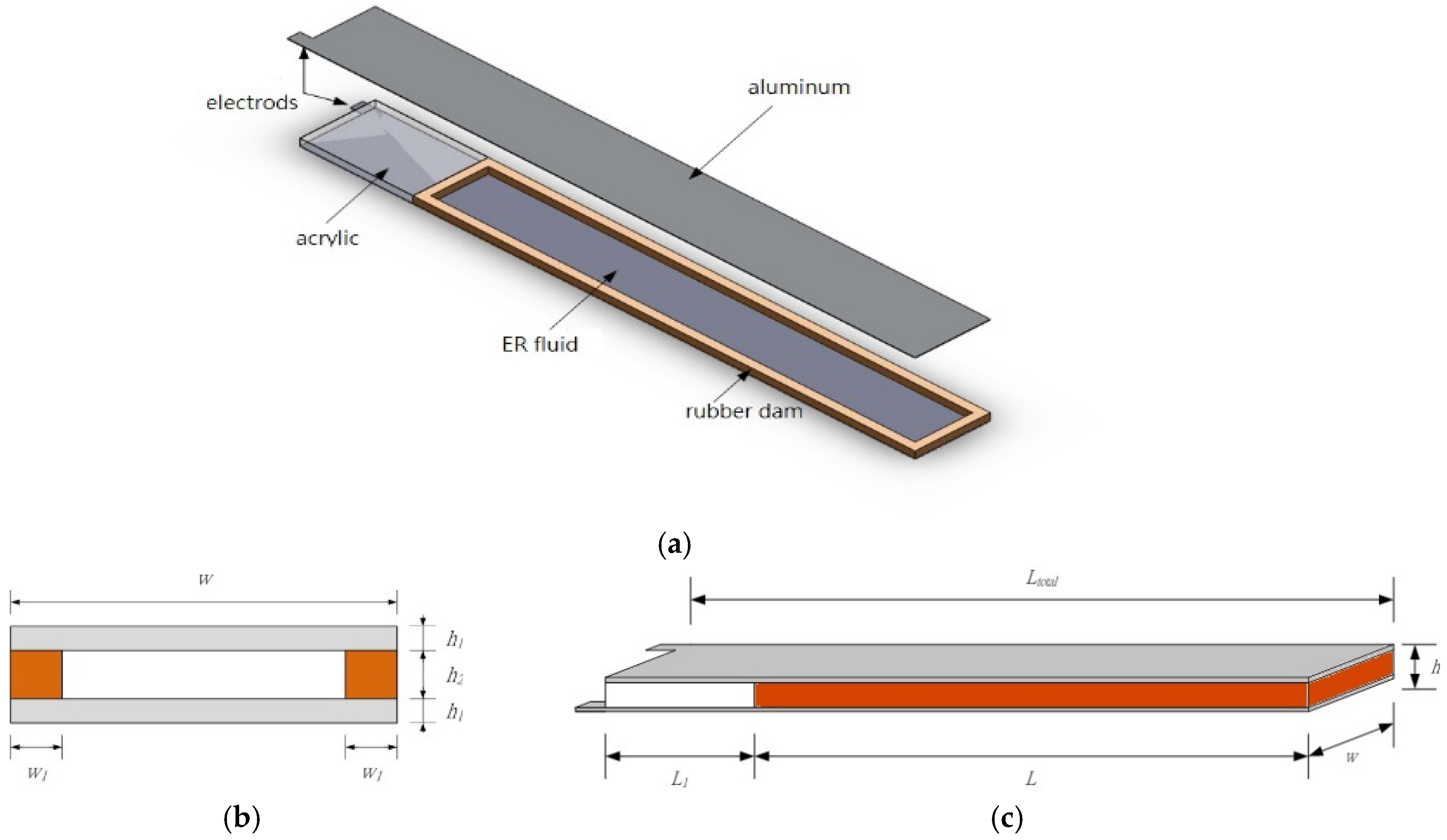
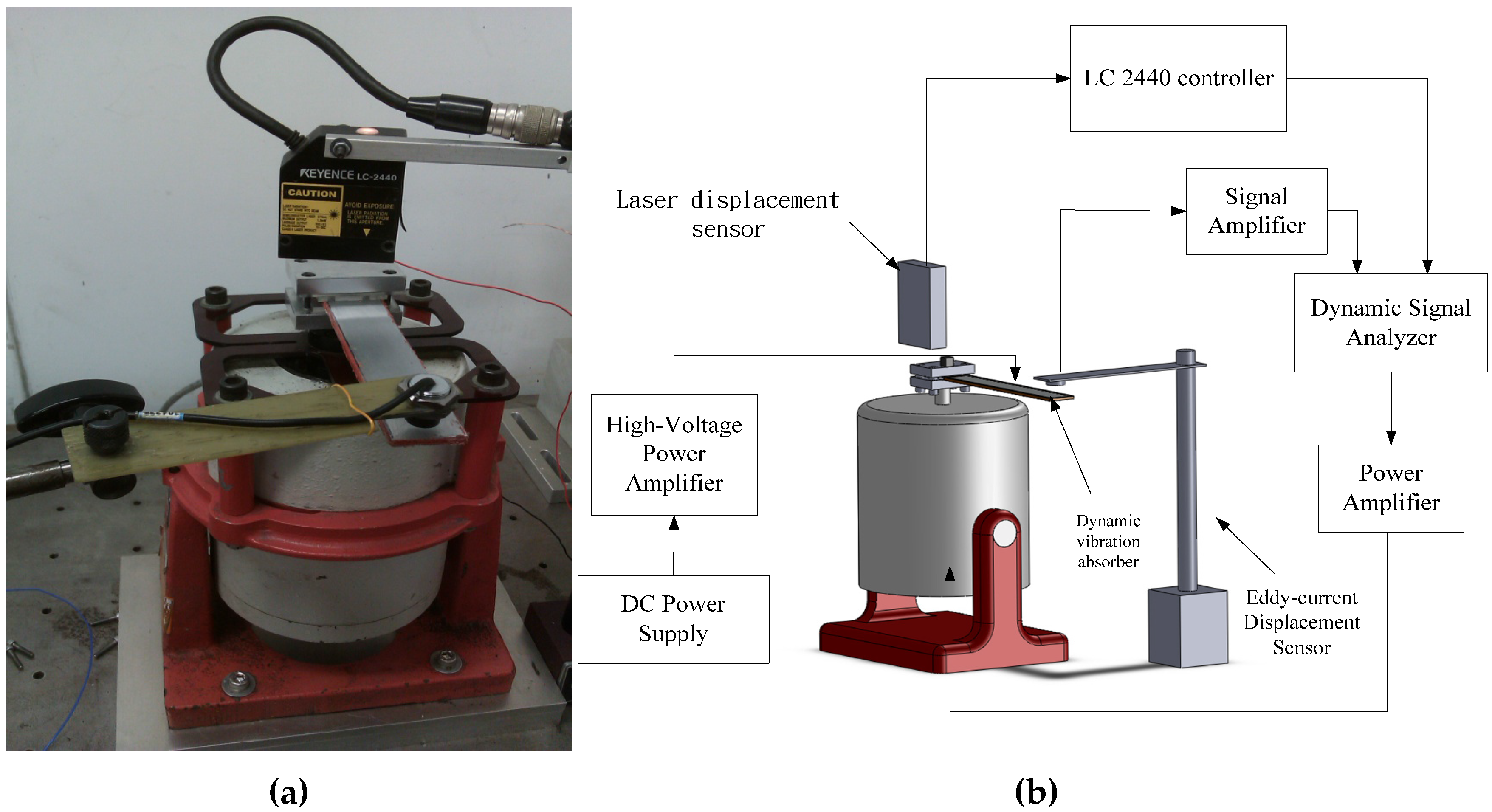




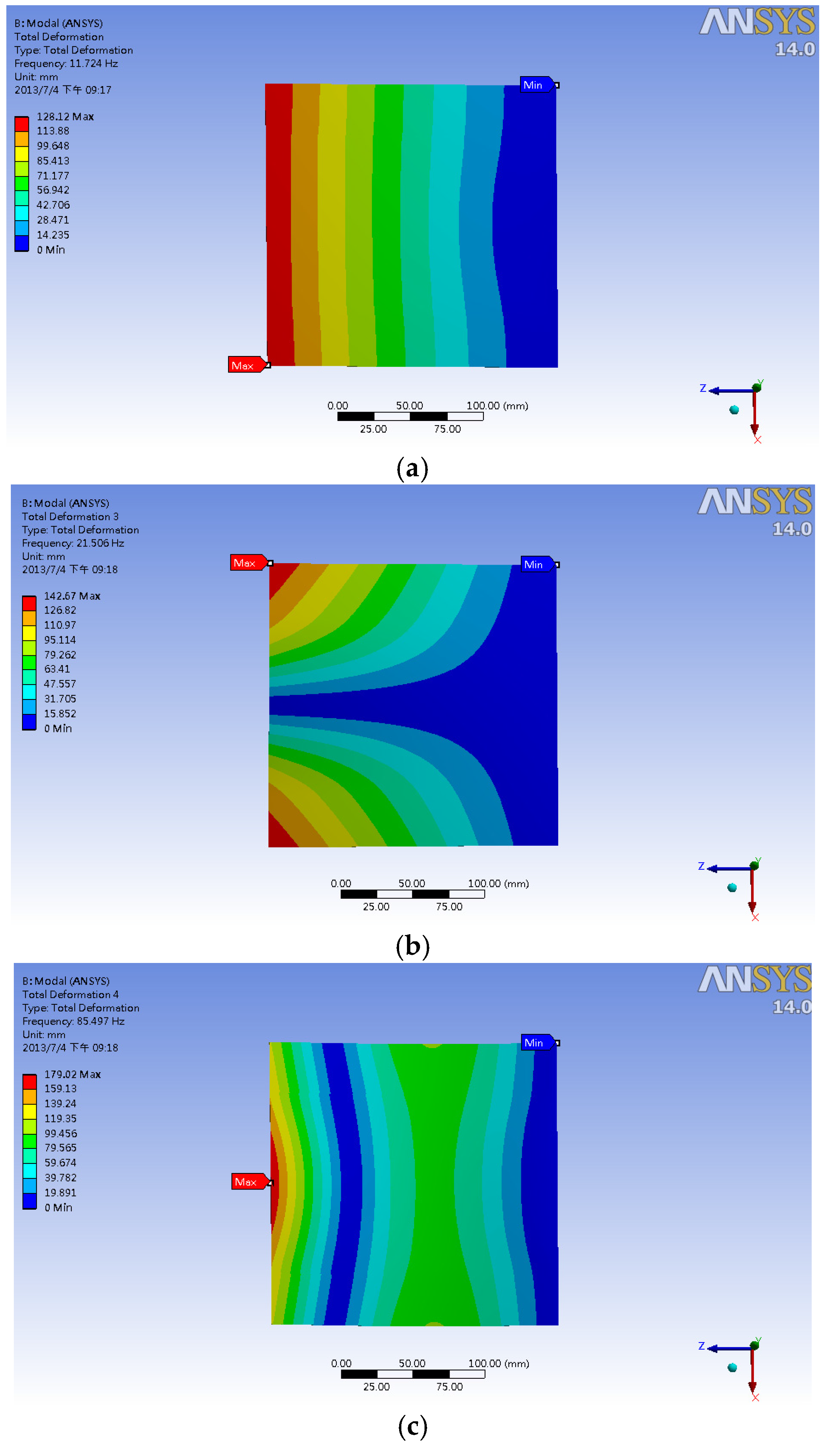

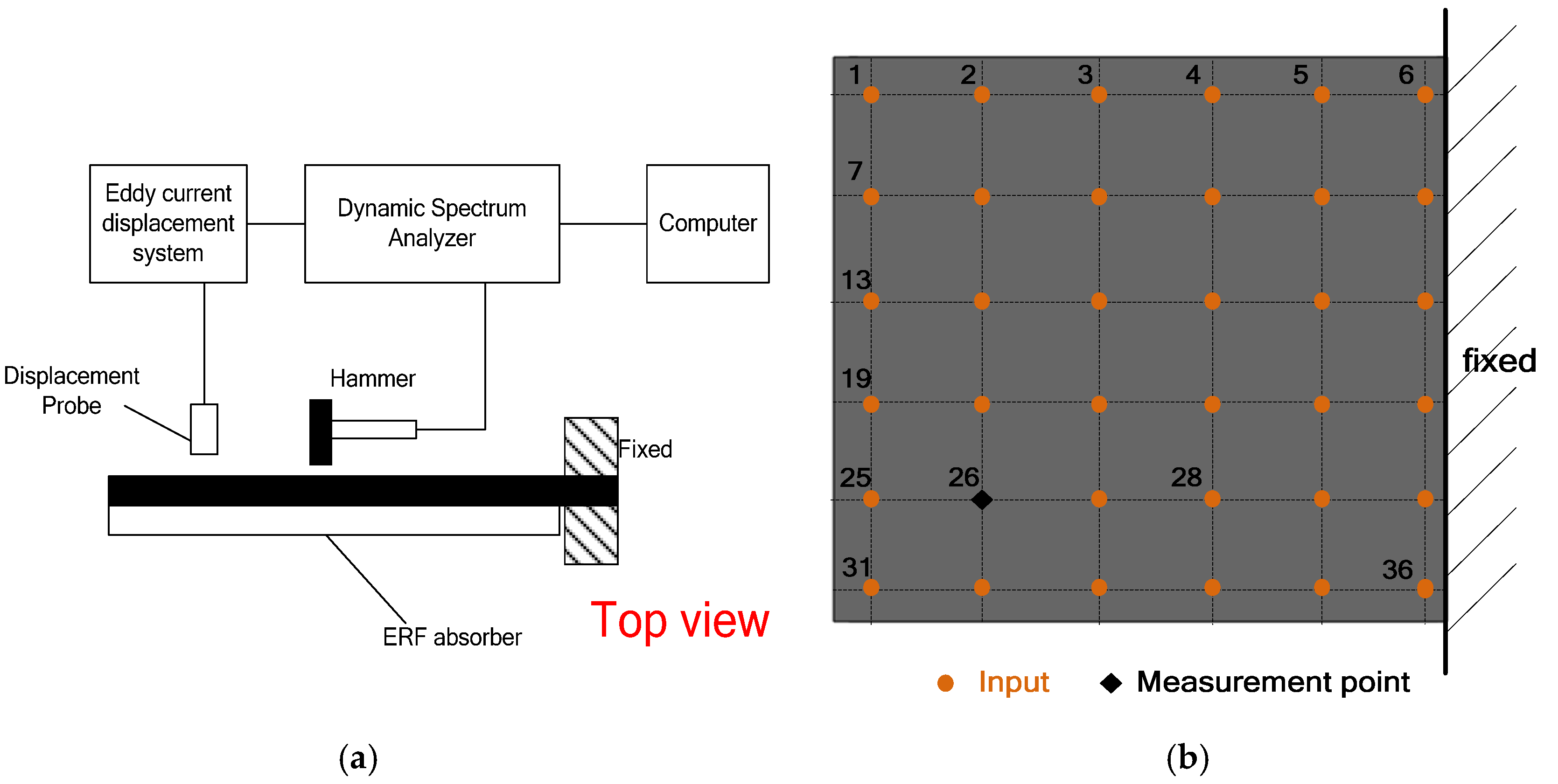

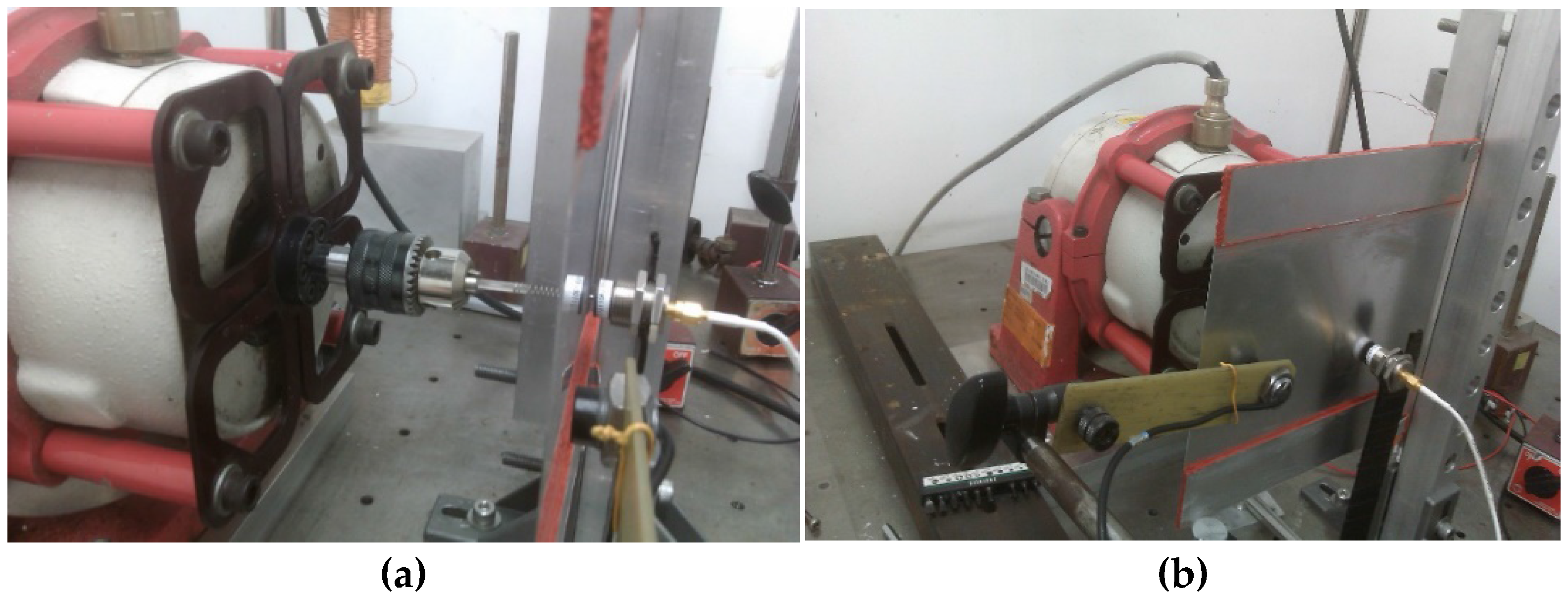

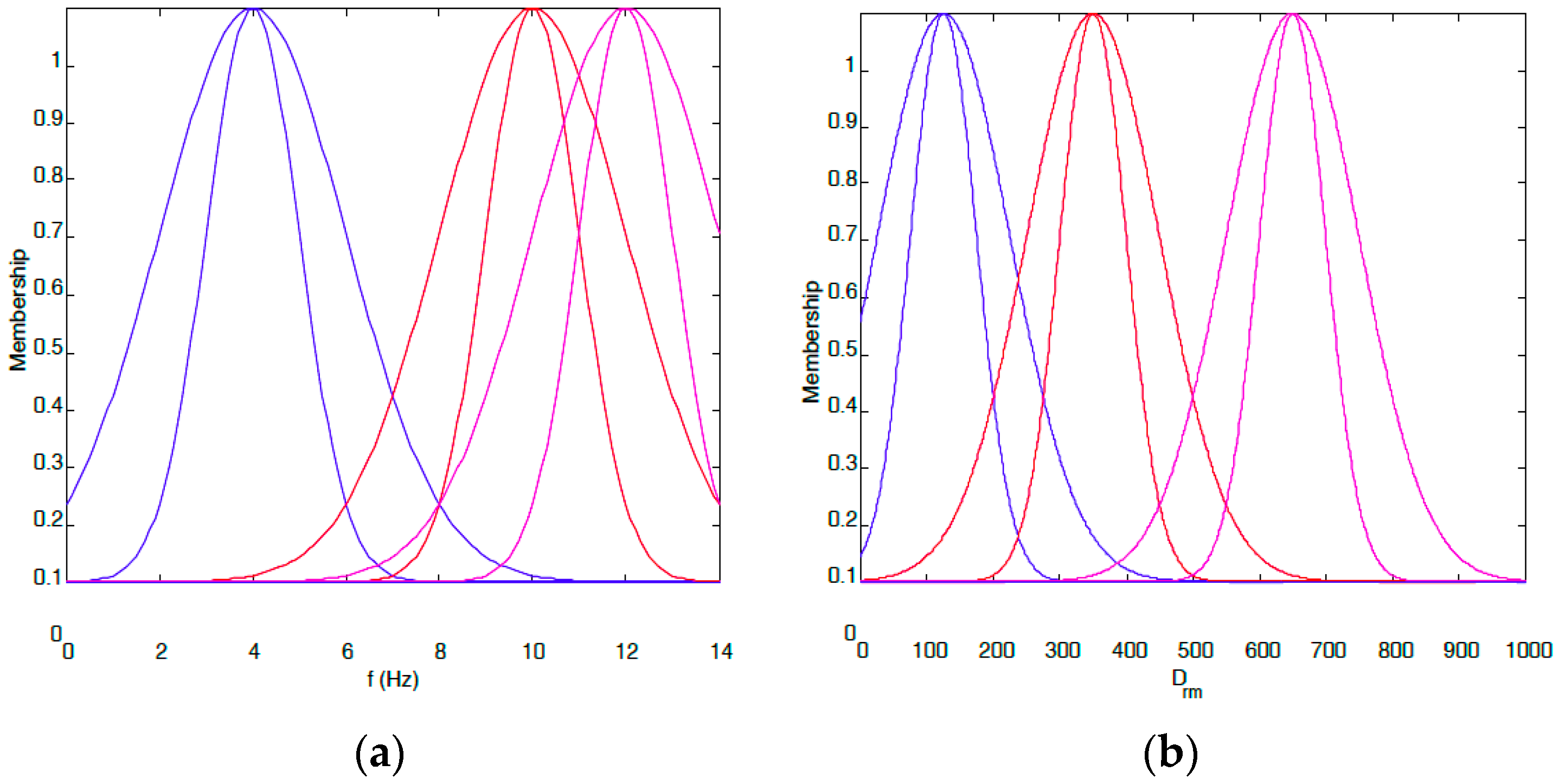

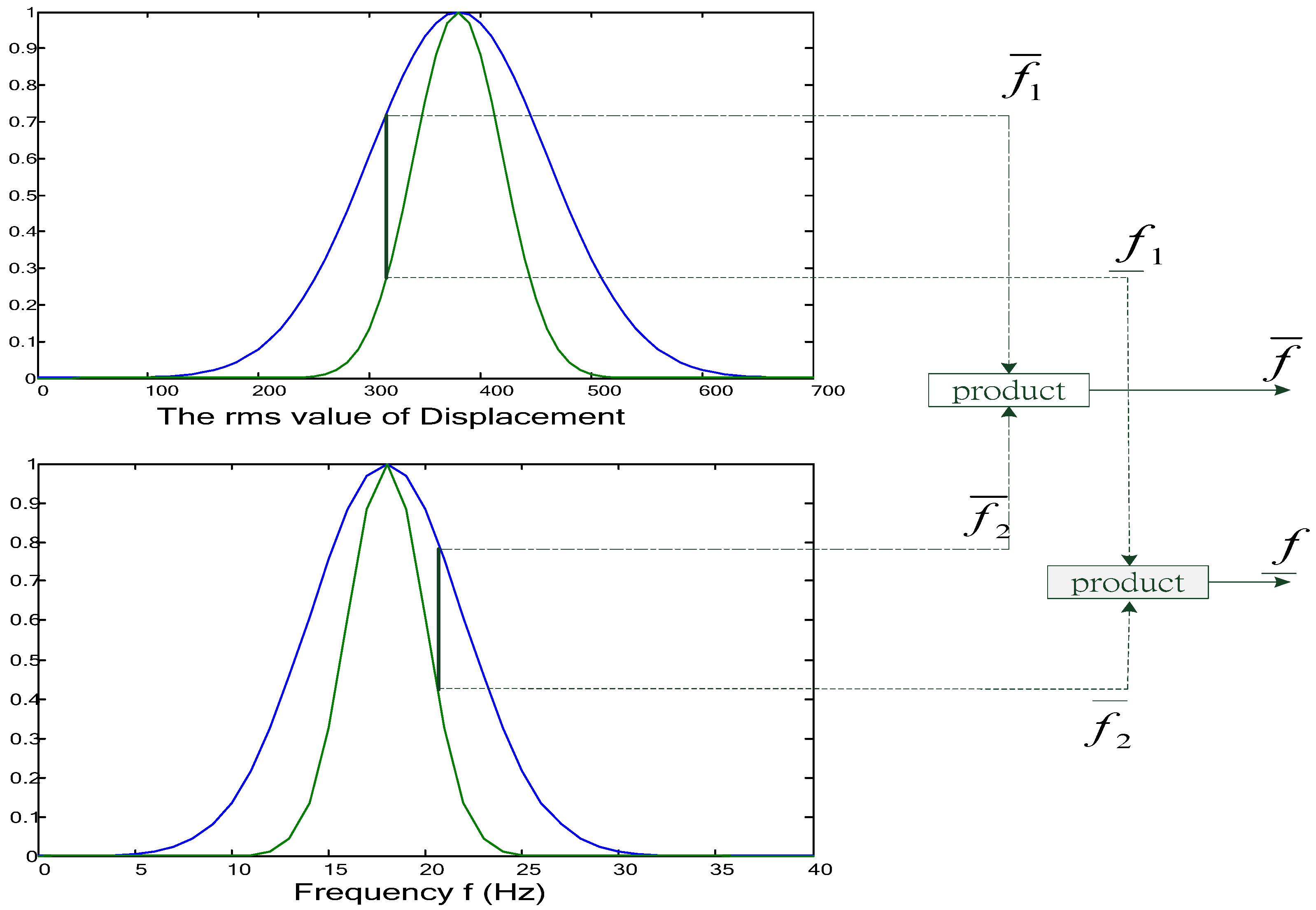
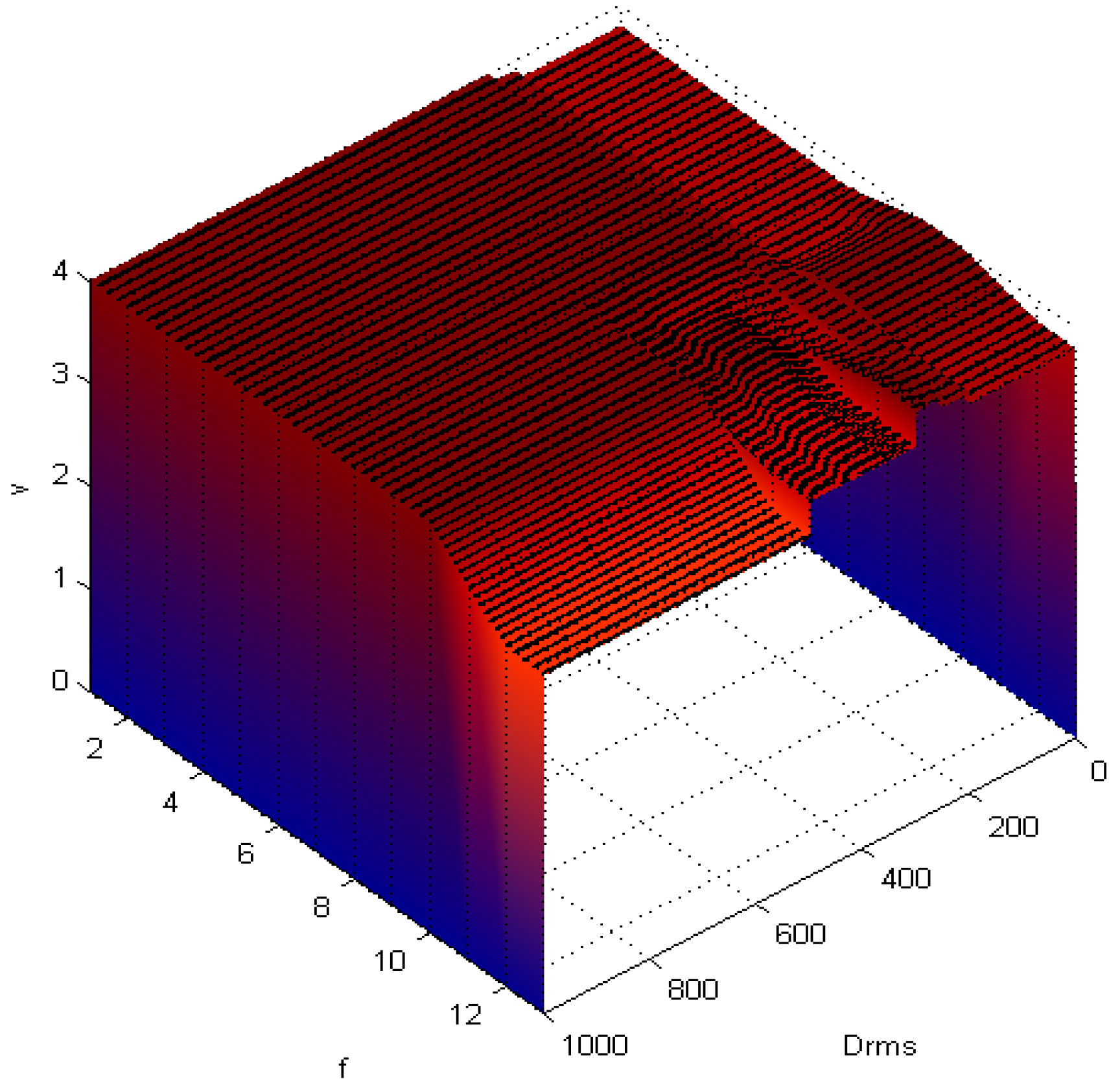
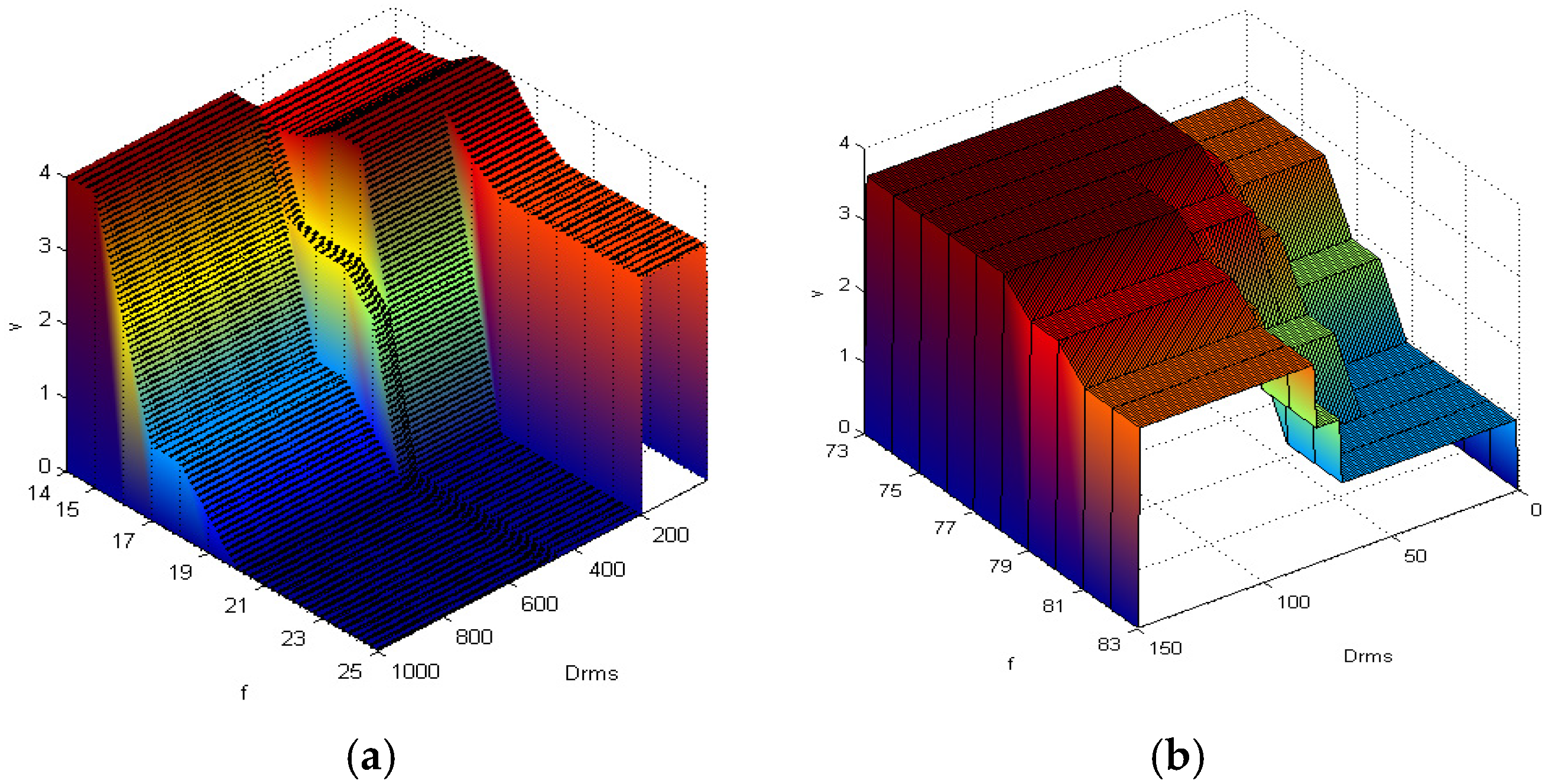
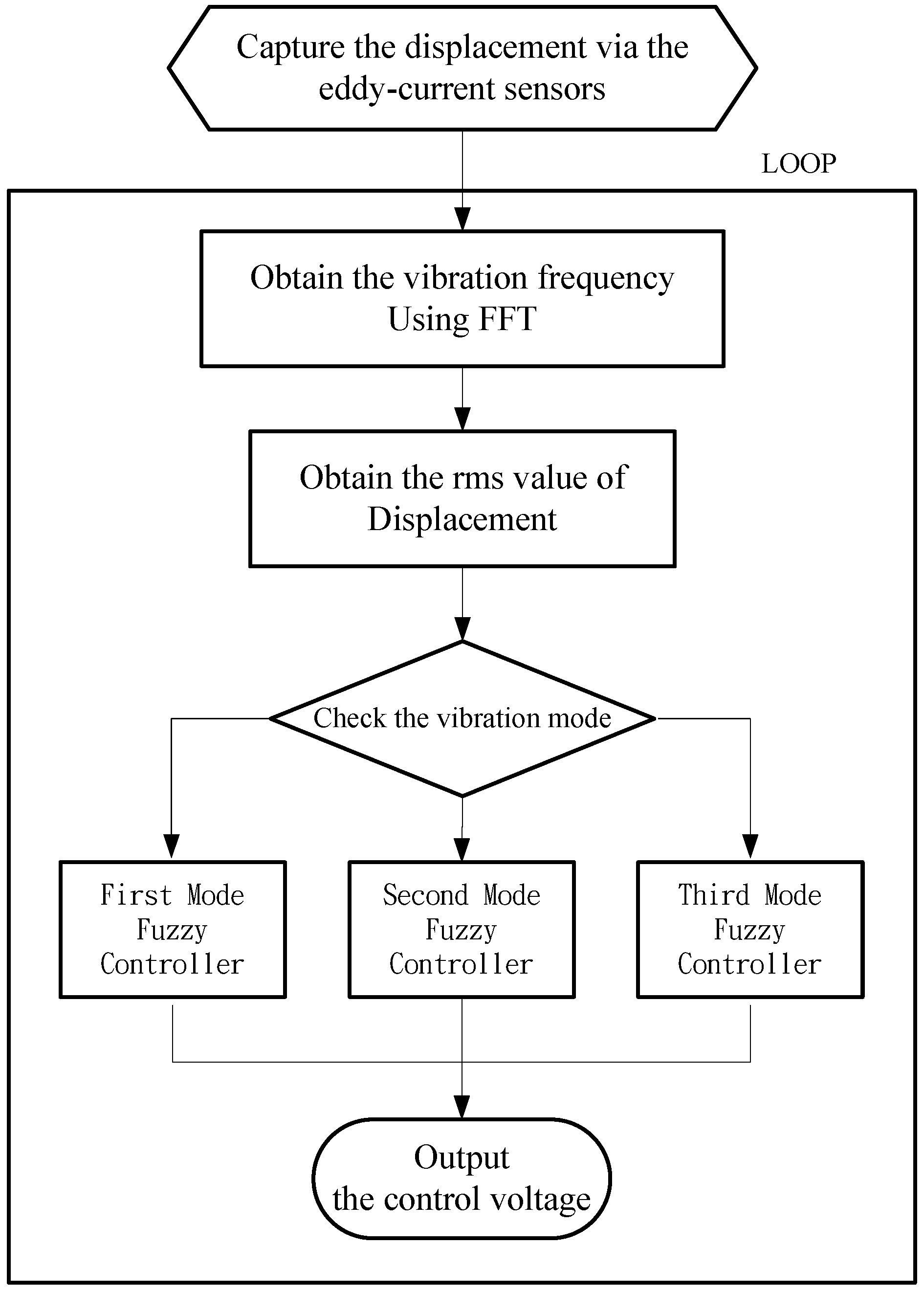

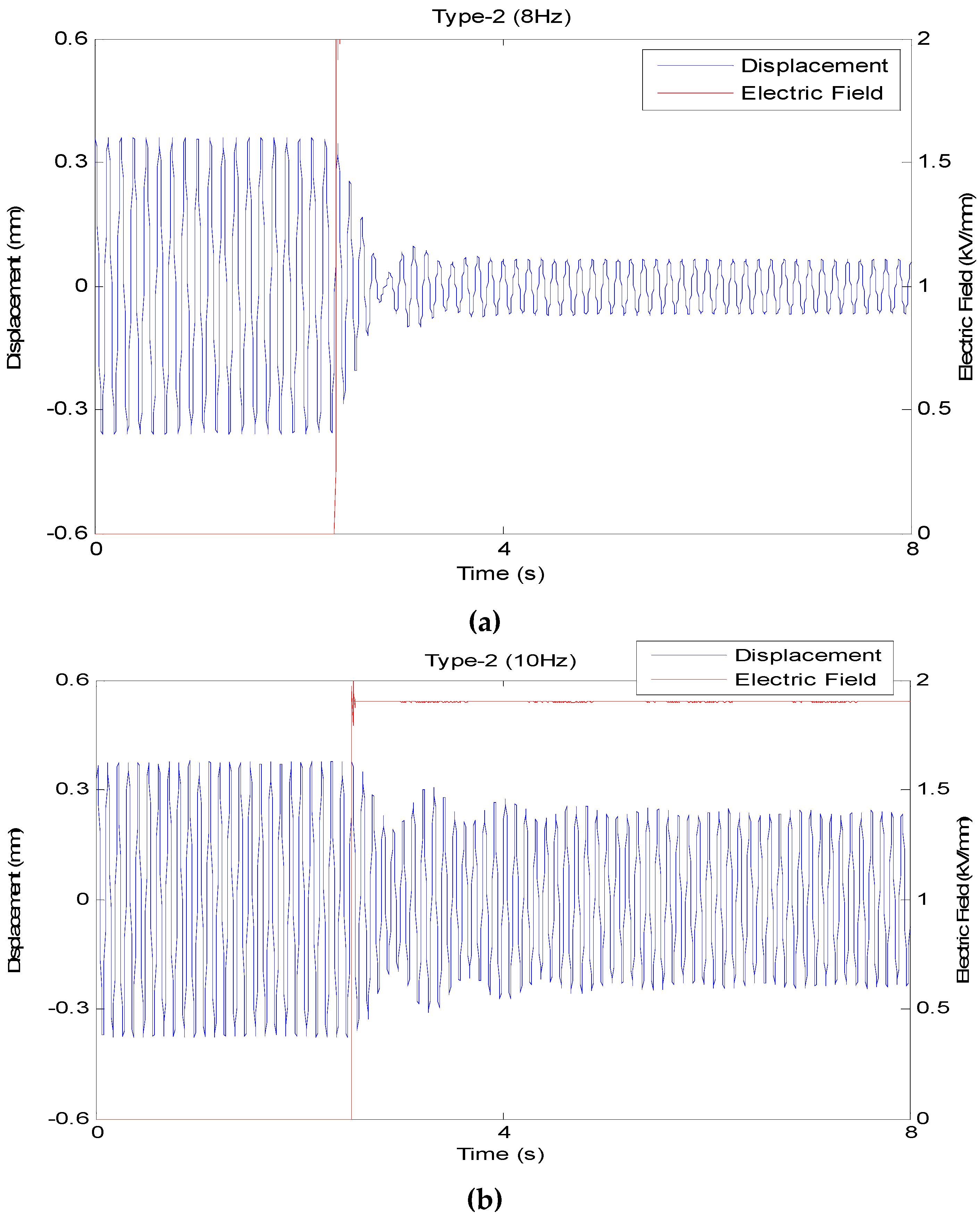
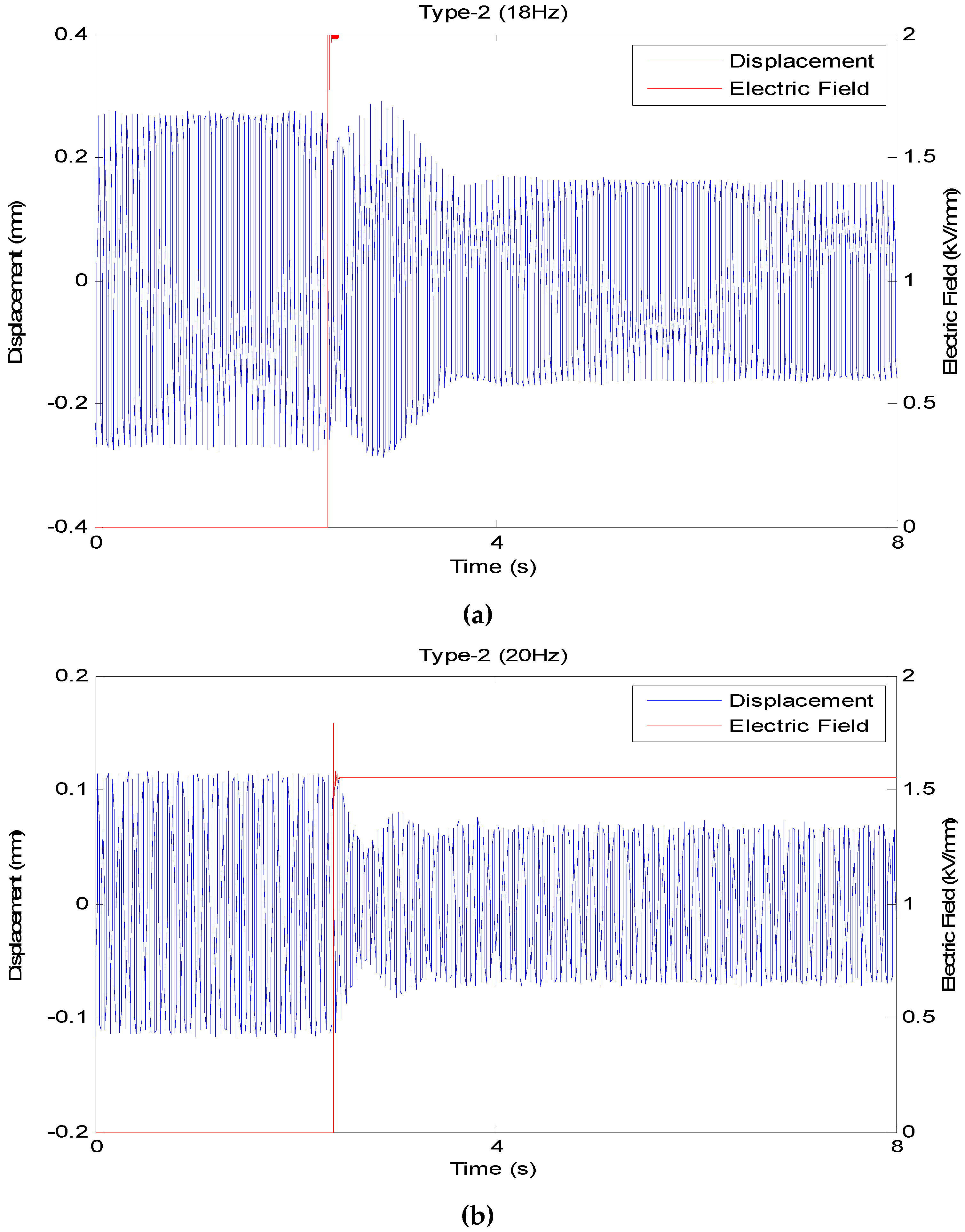


| L | W | h1 | w1 | h2 |
|---|---|---|---|---|
| 150 mm | 30 mm | 0.3 mm | 2.5 mm | 2 mm |
| Adhesives | ERF% | Volume | Weight | Equivalent density |
| Silicone Sealant | 45% | 7.25 mL | 28.6 g | 2118.52 kg/m3 |
| E (kV/mm) | F (Hz) | Amplitude (dB) | Damping Ratio (ζ) |
|---|---|---|---|
| 0 | 29.5 | 23.473 | 0.0363 |
| 0.25 | 29.75 | 21.777 | 0.0432 |
| 0.5 | 30.5 | 20.127 | 0.0573 |
| 0.75 | 32.75 | 19.658 | 0.0574 |
| 1 | 33 | 18.705 | 0.0587 |
| 1.25 | 34.5 | 17.700 | 0.0589 |
| 1.5 | 36 | 17.457 | 0.0593 |
| 1.75 | 37 | 17.961 | 0.0529 |
| 2 | 37.25 | 18.075 | 0.0560 |
| 2.25 | 38.25 | 18.774 | 0.0512 |
| W (mm) | 1st Mode Variation (Hz) | 2nd Mode Variation (Hz) | 3rd Mode Variation (Hz) |
|---|---|---|---|
| 20 | 1.362 | 1.811 | 10.069 |
| 22 | 1.331 | 1.724 | 10.756 |
| 24 | 1.406 | 1.939 | 14.912 |
| 26 | 1.378 | 1.862 | 16.391 |
| 28 | 1.392 | 1.825 | 17.613 |
| 30 | 1.374 | 1.86 | 18.352 |
| 32 | 1.357 | 1.963 | 18.790 |
| 34 | 1.399 | 1.941 | 18.980 |
| 36 | 1.361 | 2.001 | 19.157 |
| E (kV/mm) | F (Hz) | Amplitude (dB) | Damping Ratio (ζ) |
|---|---|---|---|
| 0 | 11.625 | 16.103 | 0.0218 |
| 0.5 | 11.875 | 10.142 | 0.0140 |
| 1 | 12 | 12.677 | 0.0205 |
| 1.5 | 12.375 | 15.809 | 0.0541 |
| 2 | 13.375 | 11.629 | 0.0329 |
| E (kV/mm) | F (Hz) | Amplitude (dB) | Damping Ratio (ζ) |
|---|---|---|---|
| 0 | 18.375 | 17.876 | 0.0156 |
| 0.5 | 18.125 | 14.201 | 0.0129 |
| 1 | 18.25 | 12.423 | 0.0212 |
| 1.5 | 18.5 | 14.365 | 0.0151 |
| 2 | 18.5 | 15.304 | 0.0119 |
| E (kV/mm) | F (Hz) | Amplitude (dB) | Damping Ratio (ζ) |
|---|---|---|---|
| 0 | 77 | 20.795 | 0.0083 |
| 0.5 | 77.625 | 19.547 | 0.0087 |
| 1 | 77.875 | 17.414 | 0.0108 |
| 1.5 | 78.125 | 18.382 | 0.0122 |
| 2 | 78.625 | 17.588 | 0.0119 |
| Shaker Amplitude (mVpk) | 50 | 100 | 200 | 50 | 100 | 200 | |
|---|---|---|---|---|---|---|---|
| 8 Hz Displacement (mVrms) | 10 Hz Displacement (mVrms) | ||||||
| E (kV/mm) | 1 | 98 | 201 | 413 | 162 | 312 | 633 |
| 1.5 | 82 | 181 | 363 | 148 | 267 | 515 | |
| 2 | 86 | 162 | 338 | 129 | 218 | 403 | |
| 13 Hz Displacement (mVrms) | 17 Hz Displacement (mVrms) | ||||||
| E (kV/mm) | 1 | 17 | 35 | 68 | 98 | 194 | 378 |
| 1.5 | 14 | 28 | 53 | 85 | 181 | 363 | |
| 2 | 8 | 13 | 27 | 72 | 155 | 352 | |
| 19 Hz Displacement (mVrms) | 21 Hz Displacement (mVrms) | ||||||
| E (kV/mm) | 0 | 33 | 75 | 153 | 28 | 54 | 110 |
| 0.5 | 36 | 77 | 158 | 25 | 52 | 106 | |
| 1 | 37 | 78 | 159 | 26 | 53 | 108 | |
| 23 Hz Displacement (mVrms) | 25 Hz Displacement (mVrms) | ||||||
| E (kV/mm) | 0 | 21 | 41 | 80 | 16 | 34 | 69 |
| 0.5 | 22 | 41 | 82 | 17 | 34 | 70 | |
| 1 | 22 | 41 | 81 | 16 | 34 | 71 | |
| Shaker Amplitude (mVpk) | 50 | 100 | 200 | 50 | 100 | 200 | |
|---|---|---|---|---|---|---|---|
| 74 Hz Displacement (mVrms) | 76 Hz Displacement (mVrms) | ||||||
| E (kV/mm) | 1 | 4 | 7 | 13 | 9 | 20 | 39 |
| 1.5 | 3 | 6 | 12 | 8 | 19 | 37 | |
| 2 | 5 | 8 | 14 | 10 | 20 | 37 | |
| 78 Hz Displacement (mVrms) | 80 Hz Displacement (mVrms) | ||||||
| E (kV/mm) | 0 | 26 | 53 | 104 | 15 | 30 | 61 |
| 0.5 | 18 | 33 | 68 | 15 | 30 | 60 | |
| 1 | 16 | 29 | 58 | 20 | 41 | 78 | |
| 1.5 | 14 | 23 | 47 | 23 | 46 | 87 | |
| Drms | VS | S | M | |
|---|---|---|---|---|
| f | ||||
| VS | B | VB | VB | |
| S | VB | V | VB | |
| M | M | VB | M | |
| Excitation Frequency (Hz) | Type-1 Fuzzy Controller (%) | Type-2 Fuzzy Controller (%) |
|---|---|---|
| 8 | 81.4 | 81.5 |
| 10 | 19.9 | 36.1 |
| 18 | 38.3 | 40.9 |
| 20 | 24.8 | 40.3 |
| 77 | 88.6 | 89.7 |
| 79 | 37.3 | 54.2 |
© 2017 by the authors. Licensee MDPI, Basel, Switzerland. This article is an open access article distributed under the terms and conditions of the Creative Commons Attribution (CC BY) license (http://creativecommons.org/licenses/by/4.0/).
Share and Cite
Lin, C.-J.; Lee, C.-Y.; Liu, Y. Vibration Control Design for a Plate Structure with Electrorheological ATVA Using Interval Type-2 Fuzzy System. Appl. Sci. 2017, 7, 707. https://doi.org/10.3390/app7070707
Lin C-J, Lee C-Y, Liu Y. Vibration Control Design for a Plate Structure with Electrorheological ATVA Using Interval Type-2 Fuzzy System. Applied Sciences. 2017; 7(7):707. https://doi.org/10.3390/app7070707
Chicago/Turabian StyleLin, Chih-Jer, Chun-Ying Lee, and Ying Liu. 2017. "Vibration Control Design for a Plate Structure with Electrorheological ATVA Using Interval Type-2 Fuzzy System" Applied Sciences 7, no. 7: 707. https://doi.org/10.3390/app7070707







